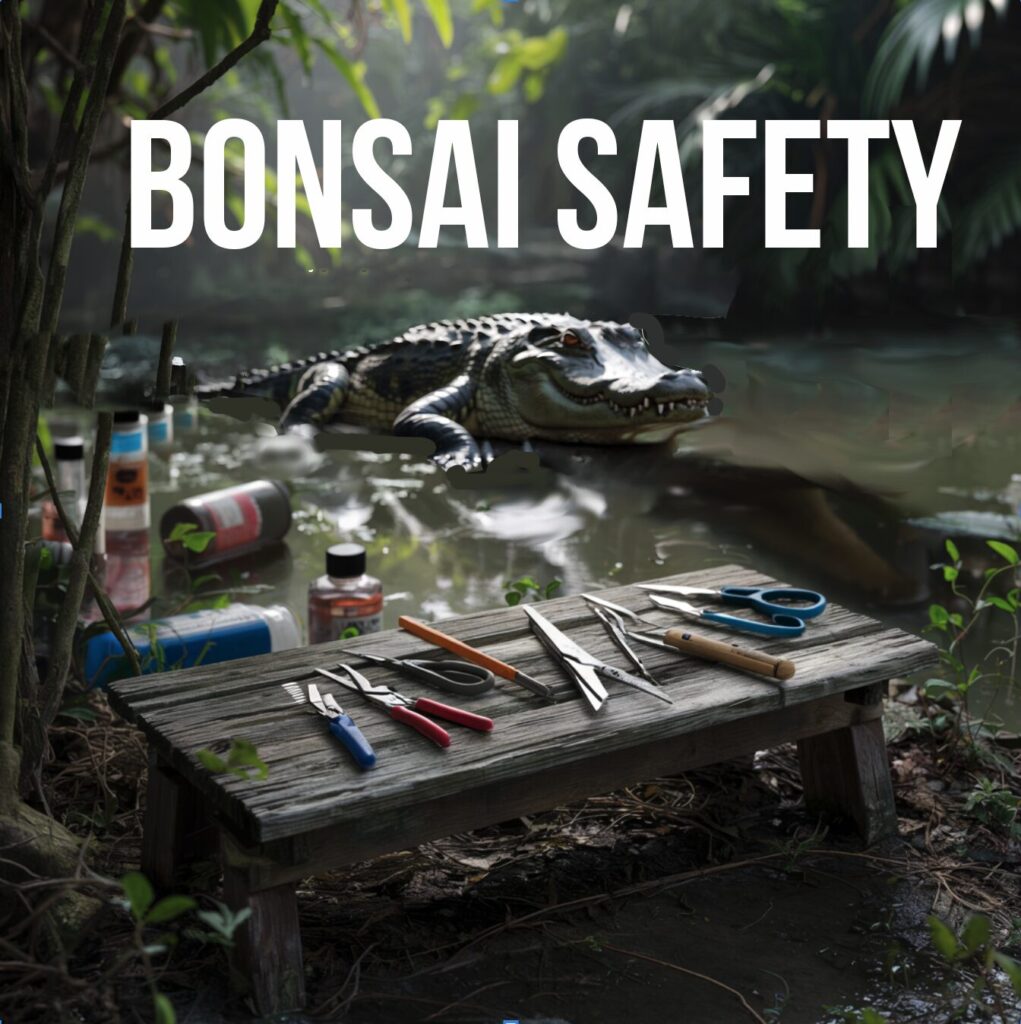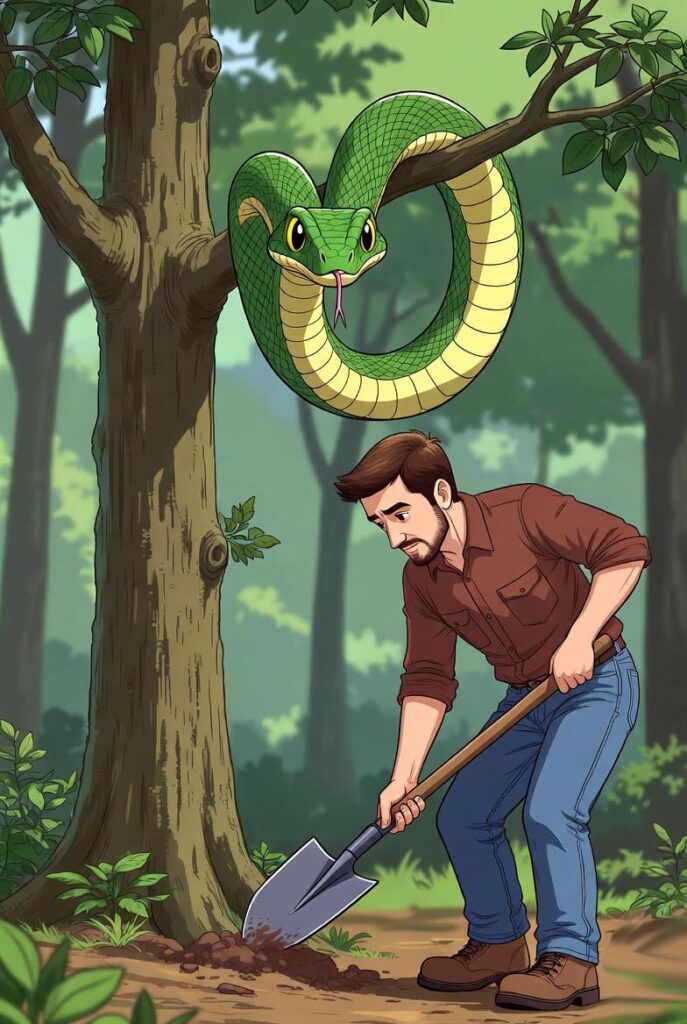
Amid the beauty of shaping and caring for miniature trees lies a set of real safety risks that every bonsai enthusiast should understand and respect. While the art of bonsai is peaceful and rewarding, it involves sharp tools, heavy materials, chemicals, and environmental exposure that can cause harm. Let’s examine those risks and offer certain mitigation strategies that can minimize them and keep bonsai beautiful, rewarding, and safe.
Sharp Tools:
Bonsai work relies on precision instruments—scissors, wire cutters, knives, chisels, and carving tools—that can easily cause cuts or punctures. Always keep blades sharp (dull edges are more dangerous), use tools with ergonomic handles, and cut away from your body. Watch what you are cutting and keep your other hand (and other people’s hands) away. After 30 years of bonsai practice, I cut myself for the first time this summer while pruning a branch as I didn’t notice my other hand was too close to the target branch. Wearing cut-resistant gloves during pruning and carving can prevent serious injury. Cut resistant gloves are graded on a scale of nine levels, from A1 (lighter) to A9 (highest), based on the force needed to cut through the glove material. I recommend at least level 7. You can get them at hardware stores such as Home Depot. When not in use, store tools in a secure case or tool roll.
Mechanical Tools:
Power tools like rotary carvers and Dremels make shaping wood easier but also introduce new hazards. Spinning at 18000 RPM a rotating cutting tool will remove flesh just as easily as wood. The first rule is to understand the tool and its functions. Be aware of the on-off switch. In an emergency every second counts. Consider what the tool could do and build practices to minimize danger. For example, a rotating bit will easily continue to run along a branch in the direction of its spin. Plan for this and keep the down spin area free of other others- especially wire. Always wear eye protection, hearing protection, and a dust mask to guard against flying debris and fine particles. Never use a mechanical rotating bit on a tree with wire as if the spinning bit hits the wire shrapnel will ensue. When you turn off the tool hold and watch the blade stop spinning before putting it down. The late Dale Cochoy told a story where he didn’t do this and the grinder he was using ran up against his pants and headed toward his crotch. Luckily the blue jean material stalled teh tool before he needed an emergency room trip. Secure the tree firmly before carving and ensure the workspace is dry and well-lit to prevent slipping or losing control.

Also, protect other people nearby. There was a famous incident where an artist was carving a tree at a bonsai convention and the rotating bit broke and flew across the room. Luckily no spectator received an injury but it was a close call.
Chemical Risks:
Fertilizers, pesticides, fungicides, and herbicides can all be toxic if mishandled. Read and follow manufacturer instructions carefully, wear gloves, boots and protective eyewear, and avoid spraying in windy conditions. Store all chemicals in clearly labeled containers and away from pets and children. I personally try to minimize the use of any chemical in my bonsai garden. Consider using organic or less toxic alternatives when possible.
Lifting and Transport:
Bonsai trees, especially mature ones in ceramic pots, can be deceptively heavy. Lift with your legs, not your back, and get help when moving large specimens. It is easy to hurt your back or get a hernia. (Don’t ask me how I know.) Maybe consider growing smaller trees. Use padded trays or carts for transport and secure trees in vehicles to prevent shifting or tipping. Dropping a pot can not only damage the tree but also cause injury from broken ceramics.

Environmental Exposure:
Working outdoors exposes you to sunburn, insect bites, and heat stress. Always wear sunscreen, a hat, and light protective clothing. Apply insect repellent when needed, and stay hydrated during long sessions. If you work under grow lights indoors, limit exposure time and use eye protection when necessary.
Collecting from the Wild or Urban Settings:
Collecting trees from nature, can be deeply rewarding but also carries unique dangers. Many stories circulate of collectors getting lost in the woods—one even required a police helicopter rescue. Always plan your route, carry a map and compass (and know how to use them), and never collect alone. Let someone know where you’re going and when you expect to return. Obtain permission before digging on any property—trespassing can lead to serious confrontations. Stay alert for wildlife that might object to your presence. Bring adequate food and water to stay hydrated. In wet environments such as Florida’s swamps, where bald cypress are often collected, always test water depth and footing before entering to avoid falls or hidden hazards.

By recognizing these potential hazards and taking sensible precautions, bonsai enthusiasts can enjoy their craft safely. Awareness, preparation, and good habits transform risk into mindfulness—allowing the art of bonsai to remain both beautiful and safe.
